Gardening with rock stars — succulents
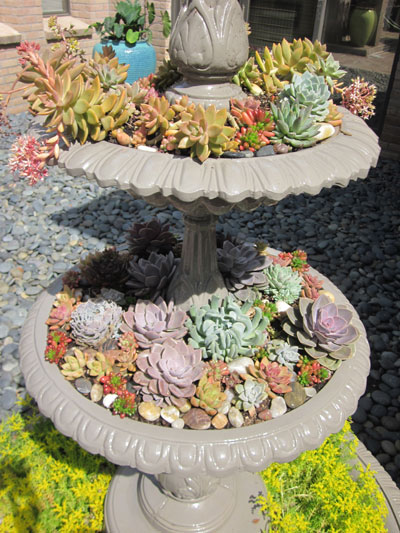
All images by Diane Morey Sitton.
Pearl-like leaves that dangle in clusters; star-shaped rosettes; wavy foliage that resembles aquatic plants tossed to and fro by the current. Succulents know no bounds when it comes to exotically-shaped foliage. Colors, too, defy limitations. Besides silver foliage blushed with pink, green leaves outlined with coral, and a host of pastels as luscious as sunrise on a summer morning, there are combinations as improbable as rose and khaki. Chartreuse, too, brightens pots and planters.
But looks aren’t everything.
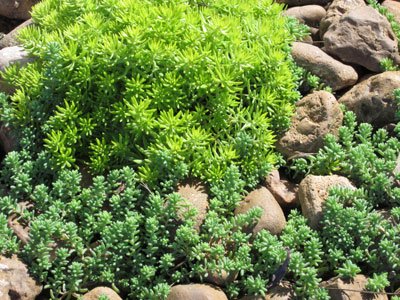
Besides having uniquely-shaped foliage in mesmerizing colors, these showy little gems are versatile. Pot them in containers, plant them in rock gardens, grow them between patio pavers, or tuck them in cracks and crevices. They tolerate heat, and they withstand drought.
That’s right! Succulents’ biggest complaint is being overwatered.
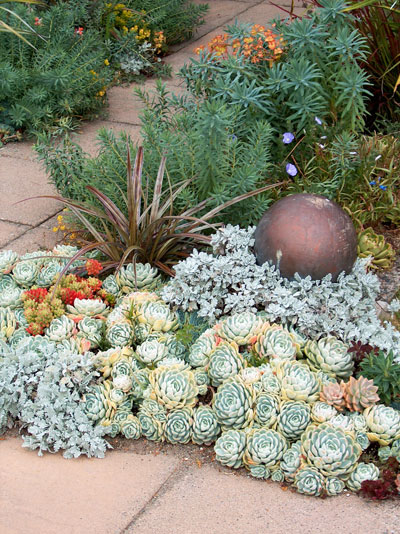
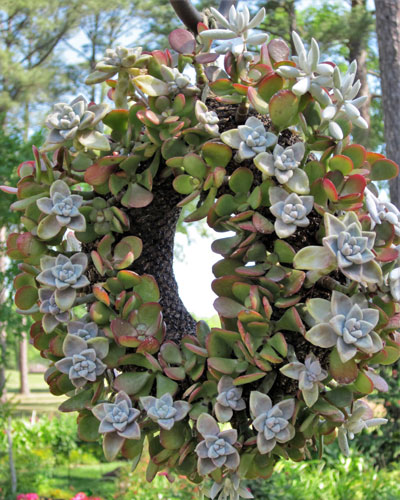
Start your collection by growing succulents in containers. Pots showcase succulents’ unique foliage, and pots can be moved to protected spots during excessive heat or rain. Shallow, bowl-like containers with drainage holes are ideal for small specimens which typically have shallow root systems. Use a light-weight potting mix specifically formulated for succulents and cacti.
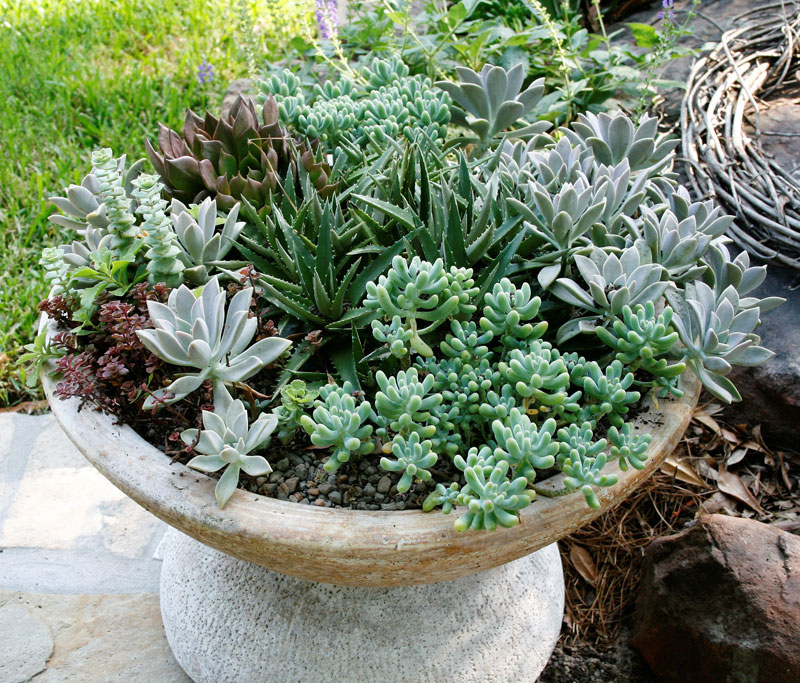
Potted succulents rarely need to be watered when grown outdoors where they receive rainfall. However, if it’s unusually hot and dry or if the leaves begin to shrivel, it’s time to water. Soak deeply, and then let the soil dry out before the next watering. Wet, boggy soil causes root rot.
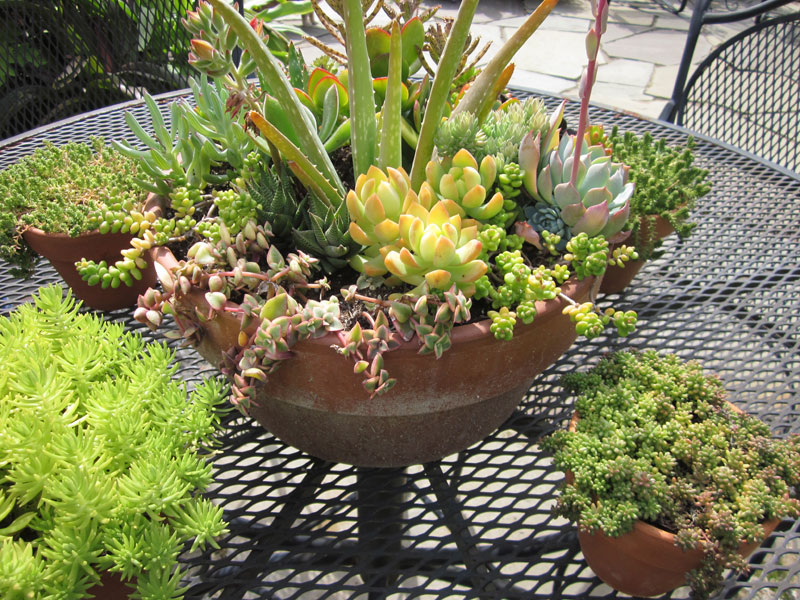
Although some selections prefer partial sun or even shade, generally succulents are sun lovers. For plump, vibrantly-hued foliage, give them six hours or more of sunlight each day. Too little light results in spindly leaves with faded colors.
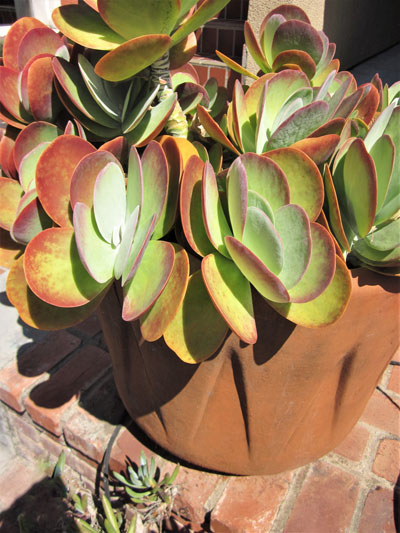
Likewise, succulents planted in beds and borders like sunny spots with well-drained soil. If you are in doubt about the soil’s porosity, dig a hole, fill it with water, and wait for about 30 minutes. If the water drains, the soil is sufficiently porous. If the soil is too heavy, create a loose planting mix using sand or expanded shale blended with the garden soil and then plant in mounded beds.
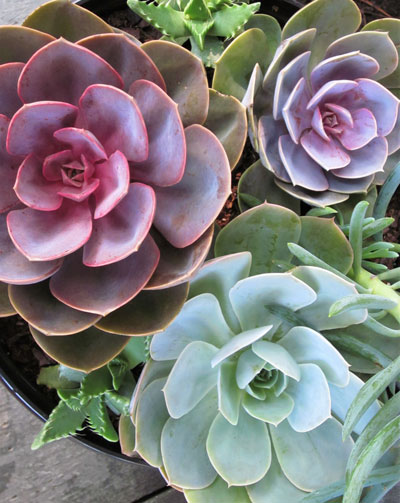
Tips to maintain healthy plants:
• Remove dead foliage at the base of each plant. Use long-handled specialty tweezers or very narrow shears to extricate the old leaves.
• Control mealybugs (white, wingless insects that feed on the fleshy foliage) by removing a leaf, branch, or the entire plant. A cotton swab dipped in rubbing alcohol is useful in removing individual mealybugs.
• Avoid scorching by gradually introducing newly-planted succulents to direct sunlight. Protect them with a shade cloth or temporarily place potted succulents in dappled shade.
• Reduce water during fall and winter.
• Move tender varieties indoors before first frost.
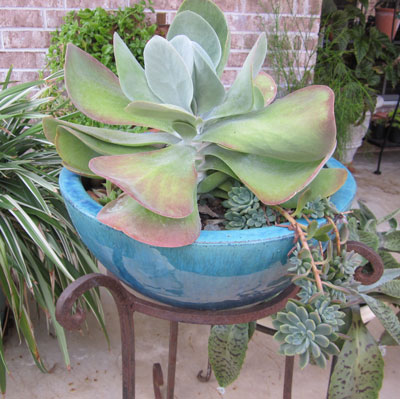
Outdoor selections include:
• Sedum—The low-growing Stonecrops are quick-spreading and easily propagated by divisions and cuttings. They are hardy.
• Echeveria – There are more than 100 species and varieties of this popular, low-growing succulent. Plant the flower-like rosettes in containers or sunny garden beds. Move indoors before frost.
• Graptopetalum— “Mother-of-pearl plant” is a perennial succulent with grayish-white, pointed leaves and dainty yellow flowers. It forms small, slow-growing rosettes.
• Sempervivum- Known as “hens and chicks,” this old-fashioned rock garden staple is valued for its offsets (“chicks”) and for its easy-care, cold-hardy nature. The slow-grower forms rosettes.
